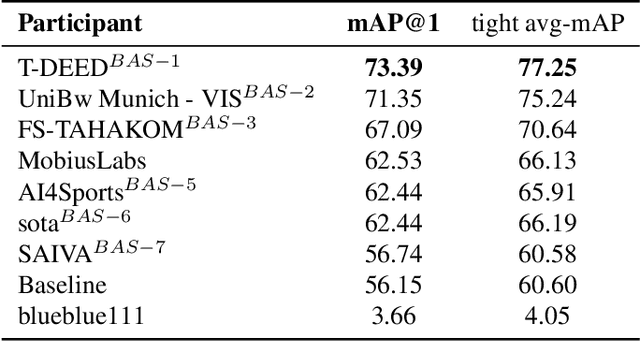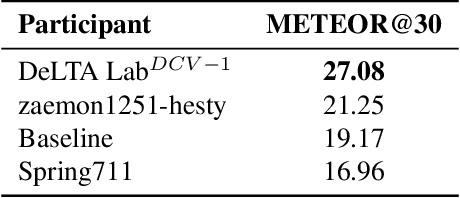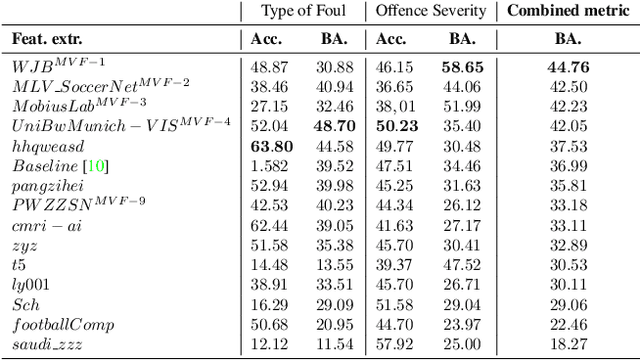Marc Gutiérrez-Pérez
SoccerNet-v3D: Leveraging Sports Broadcast Replays for 3D Scene Understanding
Apr 14, 2025Abstract:Sports video analysis is a key domain in computer vision, enabling detailed spatial understanding through multi-view correspondences. In this work, we introduce SoccerNet-v3D and ISSIA-3D, two enhanced and scalable datasets designed for 3D scene understanding in soccer broadcast analysis. These datasets extend SoccerNet-v3 and ISSIA by incorporating field-line-based camera calibration and multi-view synchronization, enabling 3D object localization through triangulation. We propose a monocular 3D ball localization task built upon the triangulation of ground-truth 2D ball annotations, along with several calibration and reprojection metrics to assess annotation quality on demand. Additionally, we present a single-image 3D ball localization method as a baseline, leveraging camera calibration and ball size priors to estimate the ball's position from a monocular viewpoint. To further refine 2D annotations, we introduce a bounding box optimization technique that ensures alignment with the 3D scene representation. Our proposed datasets establish new benchmarks for 3D soccer scene understanding, enhancing both spatial and temporal analysis in sports analytics. Finally, we provide code to facilitate access to our annotations and the generation pipelines for the datasets.
SoccerNet 2024 Challenges Results
Sep 16, 2024



Abstract:The SoccerNet 2024 challenges represent the fourth annual video understanding challenges organized by the SoccerNet team. These challenges aim to advance research across multiple themes in football, including broadcast video understanding, field understanding, and player understanding. This year, the challenges encompass four vision-based tasks. (1) Ball Action Spotting, focusing on precisely localizing when and which soccer actions related to the ball occur, (2) Dense Video Captioning, focusing on describing the broadcast with natural language and anchored timestamps, (3) Multi-View Foul Recognition, a novel task focusing on analyzing multiple viewpoints of a potential foul incident to classify whether a foul occurred and assess its severity, (4) Game State Reconstruction, another novel task focusing on reconstructing the game state from broadcast videos onto a 2D top-view map of the field. Detailed information about the tasks, challenges, and leaderboards can be found at https://www.soccer-net.org, with baselines and development kits available at https://github.com/SoccerNet.
No Bells, Just Whistles: Sports Field Registration by Leveraging Geometric Properties
Apr 12, 2024Abstract:Broadcast sports field registration is traditionally addressed as a homography estimation task, mapping the visible image area to a planar field model, predominantly focusing on the main camera shot. Addressing the shortcomings of previous approaches, we propose a novel calibration pipeline enabling camera calibration using a 3D soccer field model and extending the process to assess the multiple-view nature of broadcast videos. Our approach begins with a keypoint generation pipeline derived from SoccerNet dataset annotations, leveraging the geometric properties of the court. Subsequently, we execute classical camera calibration through DLT algorithm in a minimalist fashion, without further refinement. Through extensive experimentation on real-world soccer broadcast datasets such as SoccerNet-Calibration, WorldCup 2014 and TS- WorldCup, our method demonstrates superior performance in both multiple- and single-view 3D camera calibration while maintaining competitive results in homography estimation compared to state-of-the-art techniques.
 Add to Chrome
Add to Chrome Add to Firefox
Add to Firefox Add to Edge
Add to Edge